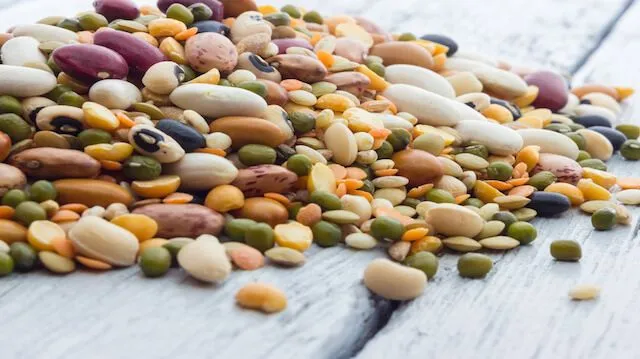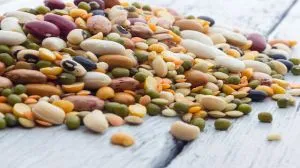
- Share on Facebook50
- Share on Pinterest
- Share on Twitter
The answer is, a little of both. And at the end of the day, what really matters is how your unique body feels when you eat them. Some examples of legumes include beans, peanuts, peas, and lentils.
Anti-nutrients
Many health-minded people, especially those interested in the paleo diet, argue that legumes should be avoided because they contain lectins and phytic acid. Lectins are proteins that bind to cell membranes. They’ve been shown to cause damage to the lining of the small intestine and to skeletal muscle, as well as interfere with the proper functioning of the pancreas.
However, these results were taken from studies in which animals consumed large amounts of raw legumes. Most of us humans would not be consuming such large portions of legumes, and we would eat them cooked, not raw. So, we can’t say for sure that the deleterious effects observed in the studies would actually be that dramatic among humans who consume normal amounts of cooked legumes. That said, it may be a good idea to avoid peanuts when possible, as both raw peanuts and peanut oil are high in lectins.
Phytic acid is the stored form of phosphorous found in many plants, particularly in nuts and seeds, and in the bran or hull of grains. While many herbivores can digest phytic acid, humans can’t. And because it binds to minerals, it can prevent us from fully absorbing the minerals in our food.
It also interferes with digestive enzymes. However, our gut bacteria produce enzymes that can break down phytic acid. What’s more, phytic acid can actually have some benefits, like helping to prevent the formation of free radicals and the accumulation of heavy metals.
 Fiber and nutrients
Fiber and nutrients
You’re probably aware that legumes are a good source of fiber, which can help to prevent colon and rectal cancer, heart disease, and type 2 diabetes, and can play a beneficial role in stabilizing blood sugar.
In addition, legumes contain a number of important nutrients, like B vitamins, folate, and antioxidants. However, not all of these nutrients are particularly bioavailable, due to the presence of phytic acid.
So if you’re concerned with getting the most bang for your buck when it comes to selecting your foods, there are certainly more nutrient-dense options than legumes.
FODMAPs
Another reason some people choose to stay away from legumes is that they contain FODMAPs, an acronym deriving from fermentable oligo-, di-, mono-saccharides and polyols, which are carbohydrates that are not always well absorbed in the body. They can cause gas, bloating, and other digestive challenges.
However, not everyone has trouble absorbing FODMAPs, so if you don’t experience any symptoms after eating legumes, this probably isn’t an issue for you.
So what’s the final verdict? As with so many decisions when it comes to food and diet, whether or not you eat legumes is a personal decision based on how you feel when you eat them. If legumes cause bloating for you, try taking a break from eating them. If you don’t experience any undesirable symptoms when you eat them, feel free to dig in!
—The Alternative Daily
Sources:
http://chriskresser.com/are-legumes-paleo
http://www.drweil.com/drw/u/ART03206/Cooking-With-Legumes.html
- Share on Facebook50
- Share on Pinterest
- Share on Twitter

